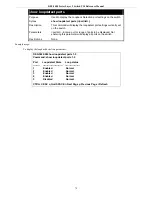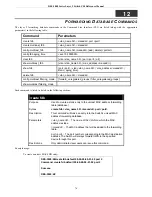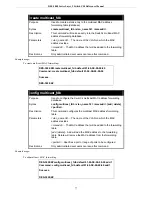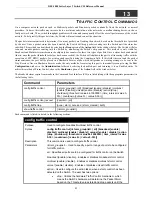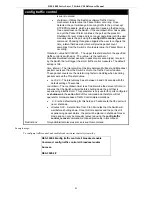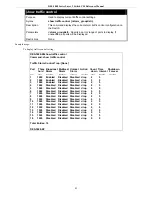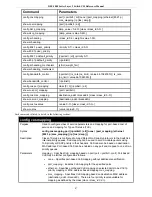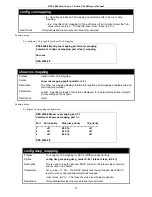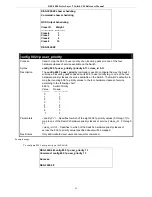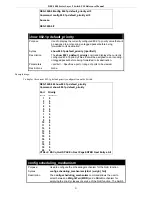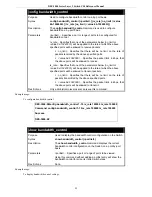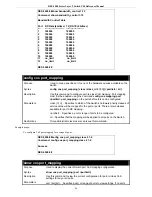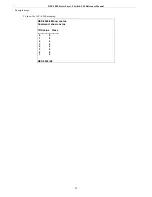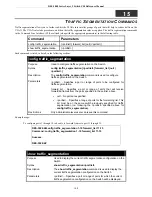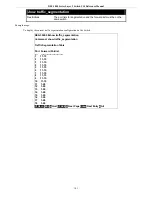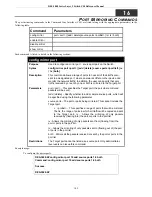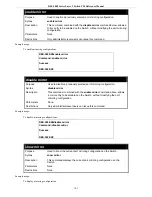
DES-3000 Series Layer 2 Switch CLI Reference Manual
Example usage:
To configure CoS mapping for DSCP:
DES-3026:4#config dscp_mapping dscp_value 1 class 0
Command: config dscp_mapping dscp_value 1 class 0
Success
DES-3026:4#
show dscp_mapping
Purpose
To display current DSCP mapping.
Syntax
show dscp_mapping {dscp_value <value 0-63>}
Description
Use this to display the CoS priority level currently mapped for DSCP
levels.
Parameters
dscp_value <value 0-63>
- Specify a DSCP value to view the current
value mapped to it in the Switch.
Restrictions Only
administrator-level users can issue this command.
Example usage:
To display current CoS mapping for DSCP:
DES-3026:4#show dscp_mapping dscp_value 13
Command: show dscp_mapping dscp_value 13
DSCP Class
---------------------
13 0
DES-3026:4#
config scheduling
Purpose
Used to configure traffic scheduling for each of the Switch’s QoS queues.
Syntax
config scheduling <class_id 0-3> {weight <value 1-55}
Description
The Switch contains four hardware priority classes of service per device. The
Switch’s default settings draw down the four hardware classes of service in order,
from the highest class (Class 3) to the lowest class (Class 0). Starting with the
highest priority class of service (Class 3), the highest priority class of service will
transmit all of the packets and empty its buffer before allowing the next lower priority
class of service to transmit its packets. The next highest priority class of service will
empty before proceeding to the next class of service and so on. Lower priority
classes of service are allowed to transmit only if the higher priority classes of service
in the buffer are completely emptied. Packets in the higher priority classes of service
are always emptied before any in the lower priority classes of service regardless of
latency or volume of the lower priority classes of service.
The default settings for QoS scheduling employ this strict priority scheme to empty
priority classes of service.
The
config scheduling
command can be used to specify the round robin rotation by
which these four hardware priority classes of service are reduced.
The
weight
parameter allows specification of the maximum number of packets a
given priority classes of service can transmit before allowing the next lowest priority
queue to begin transmitting its packets. A value between 0 and 55 packets can be
89

